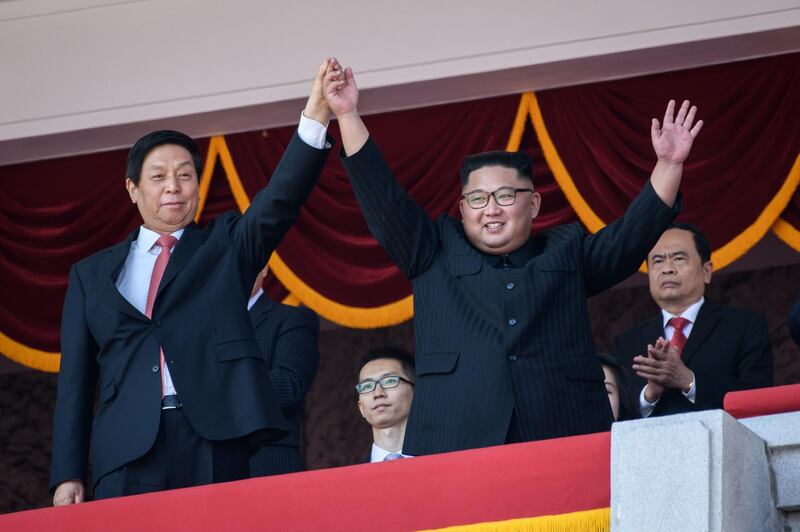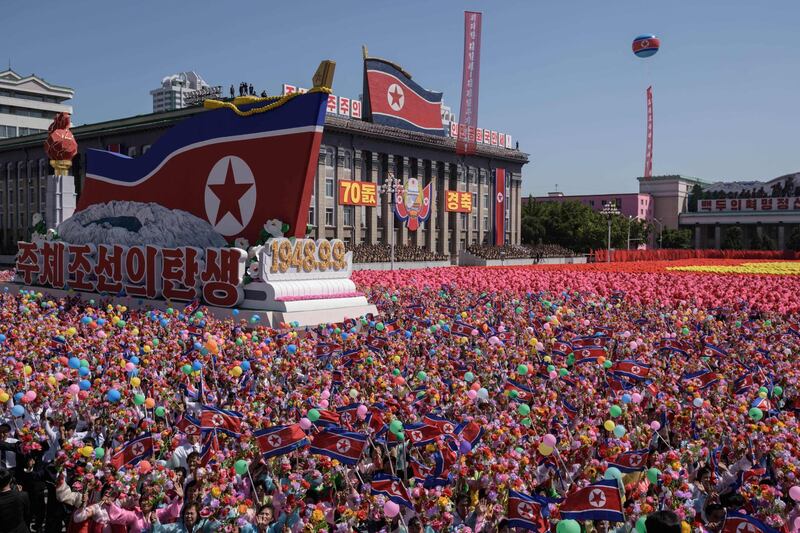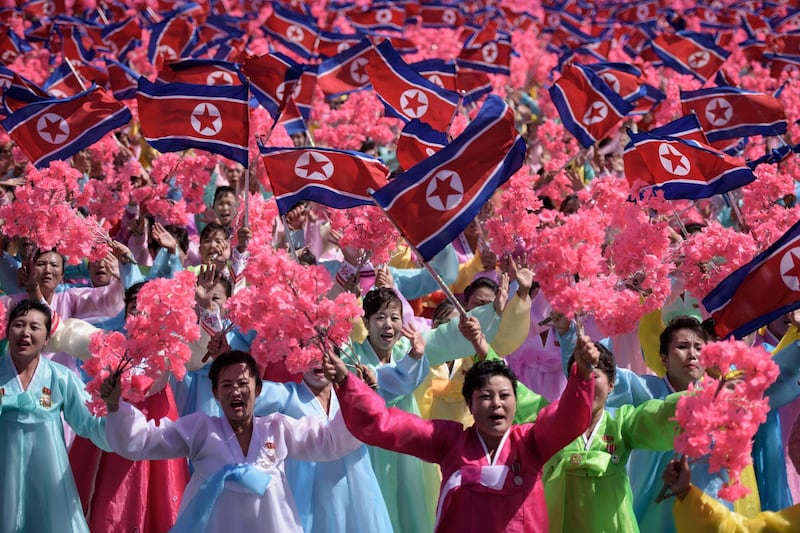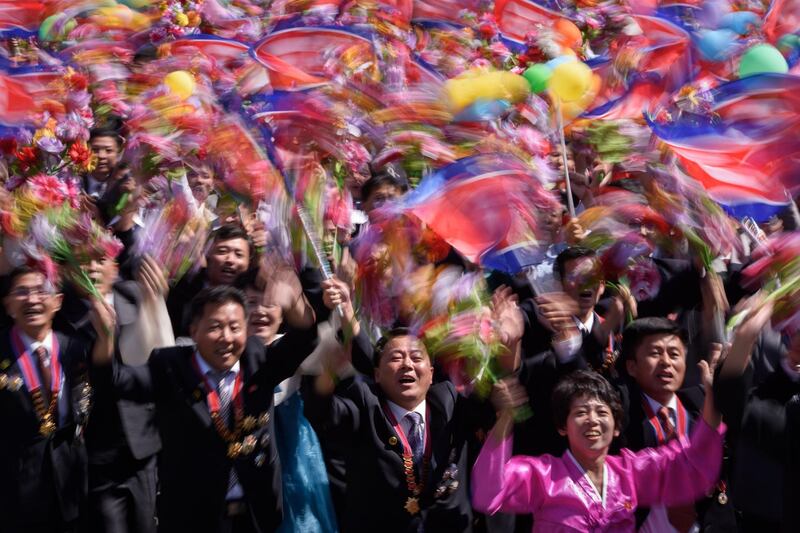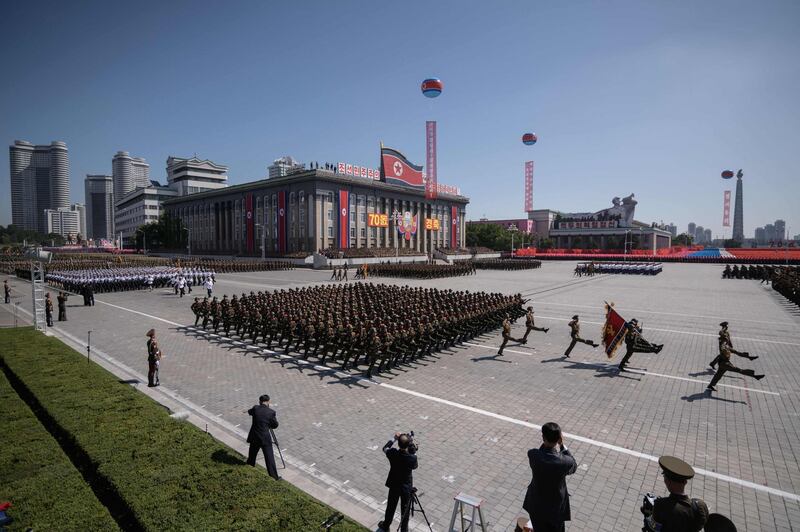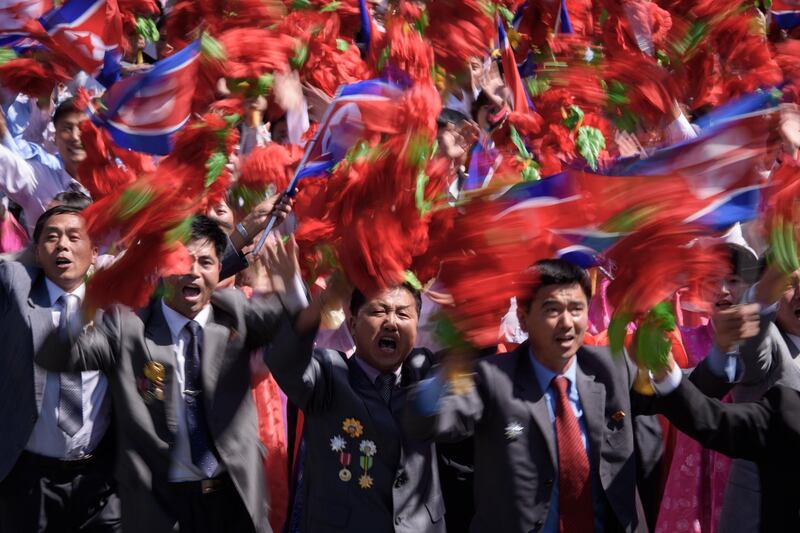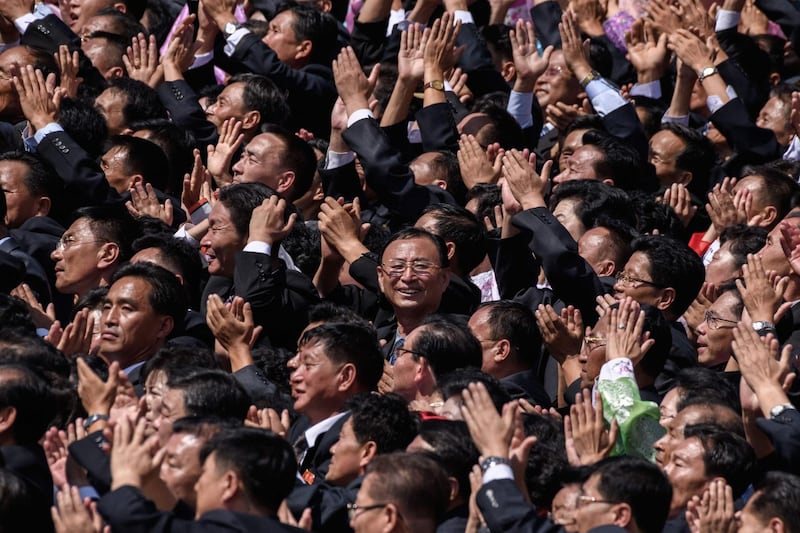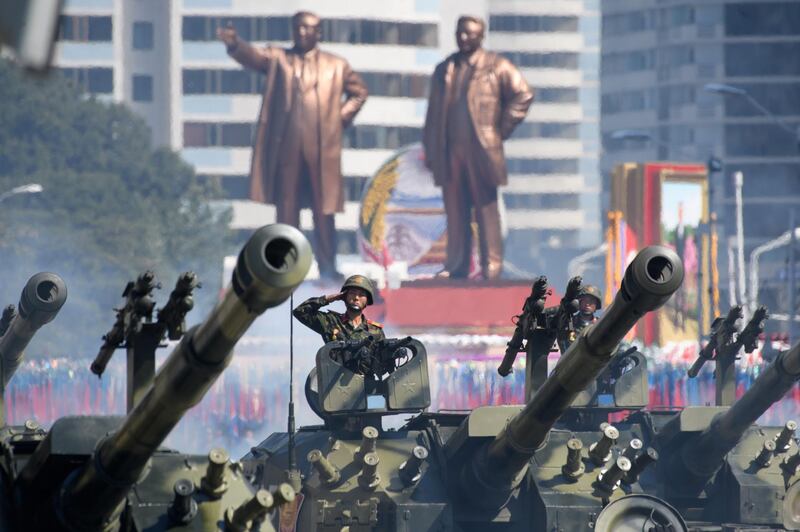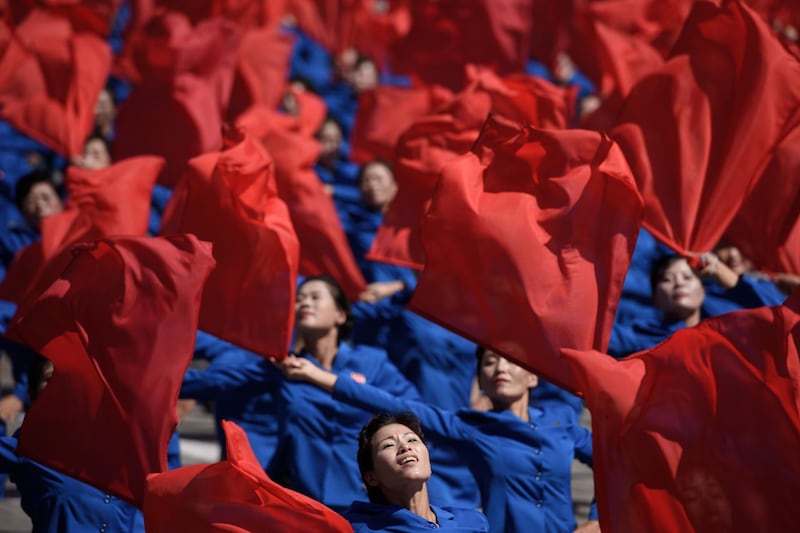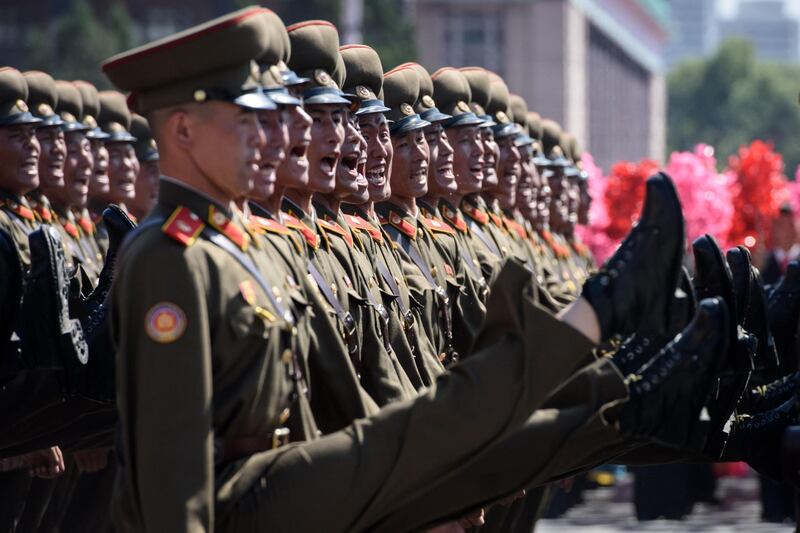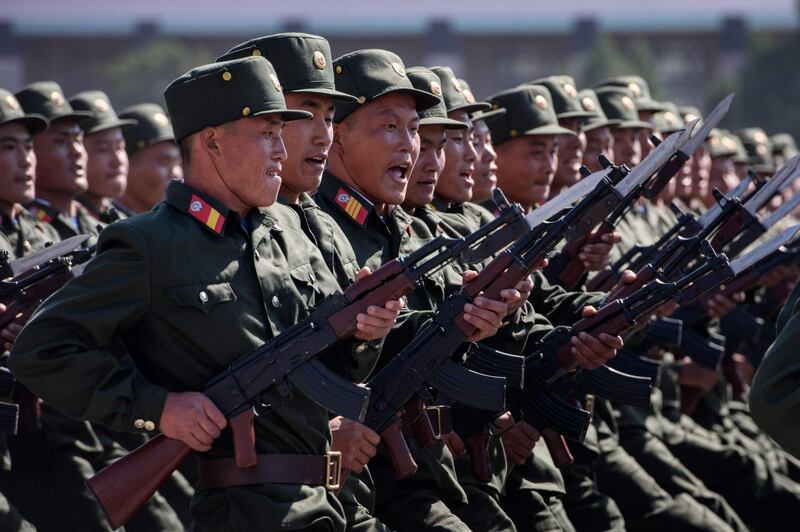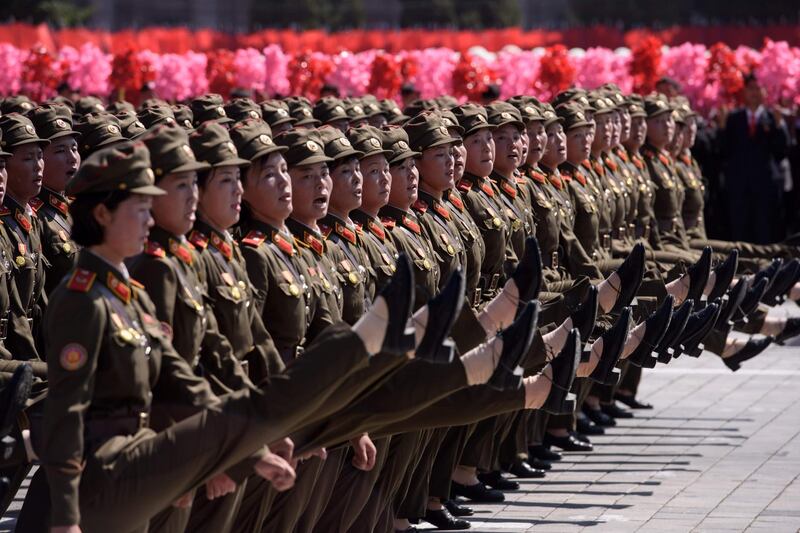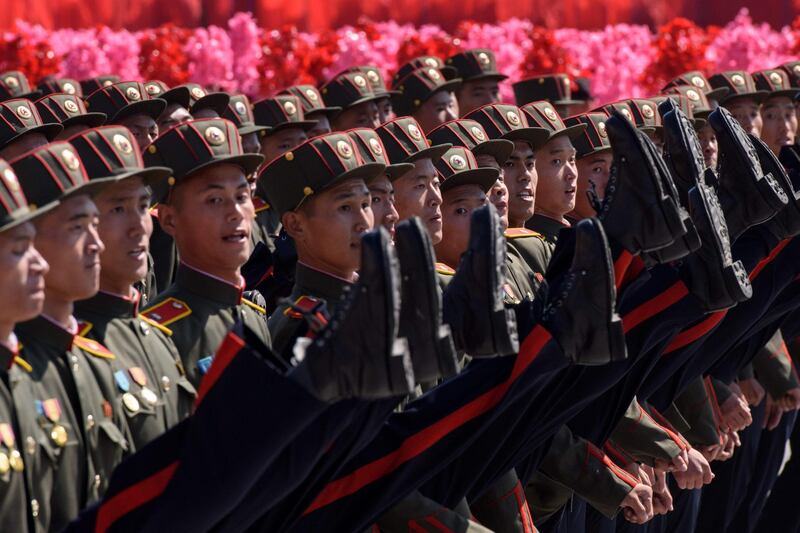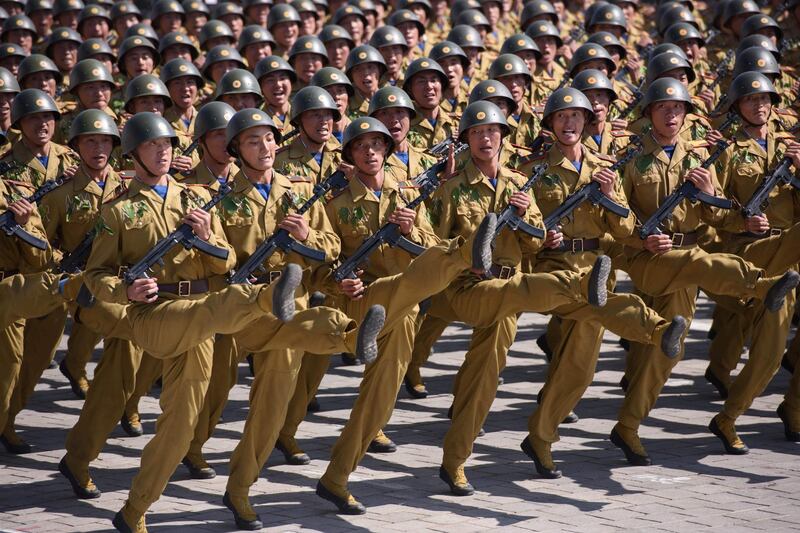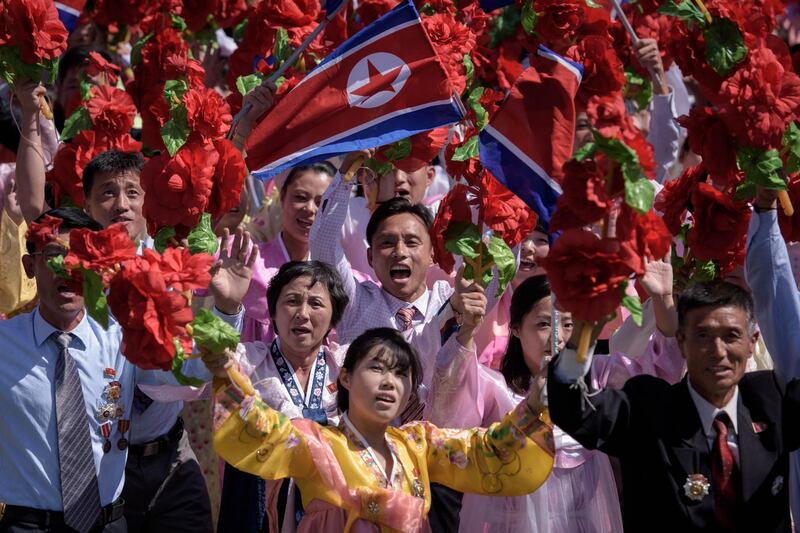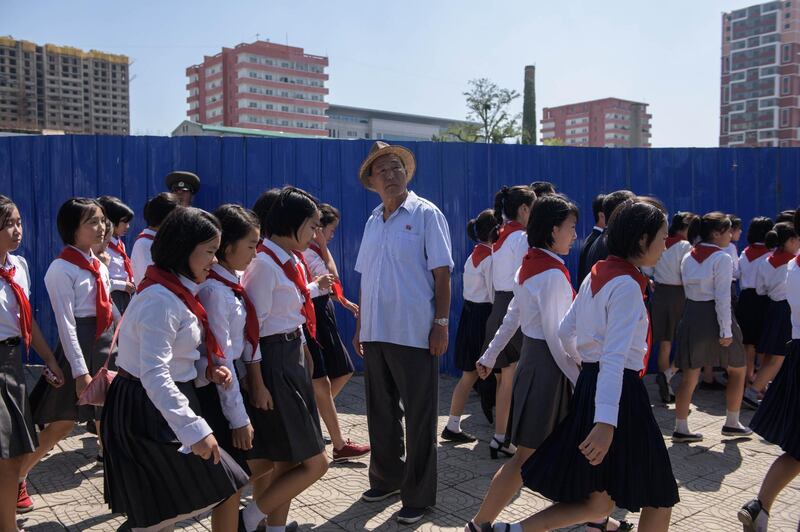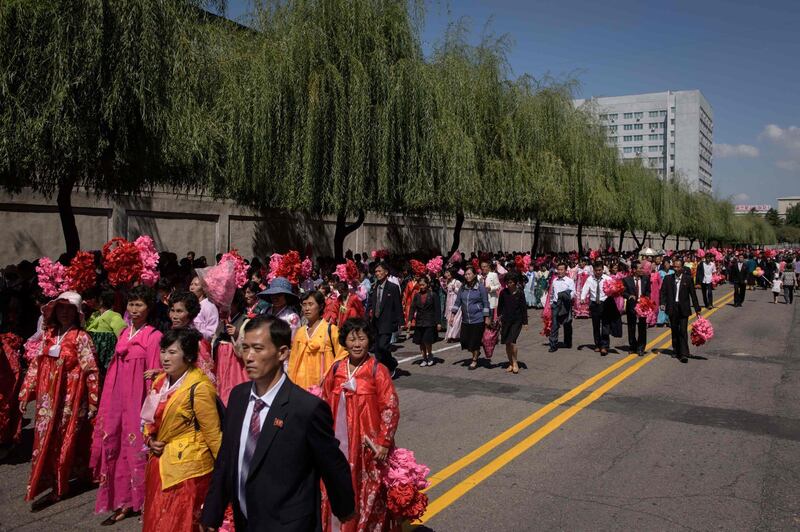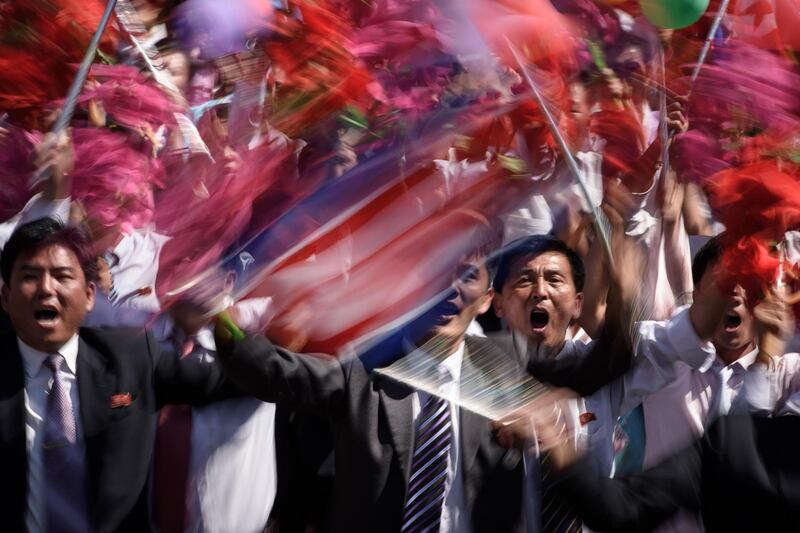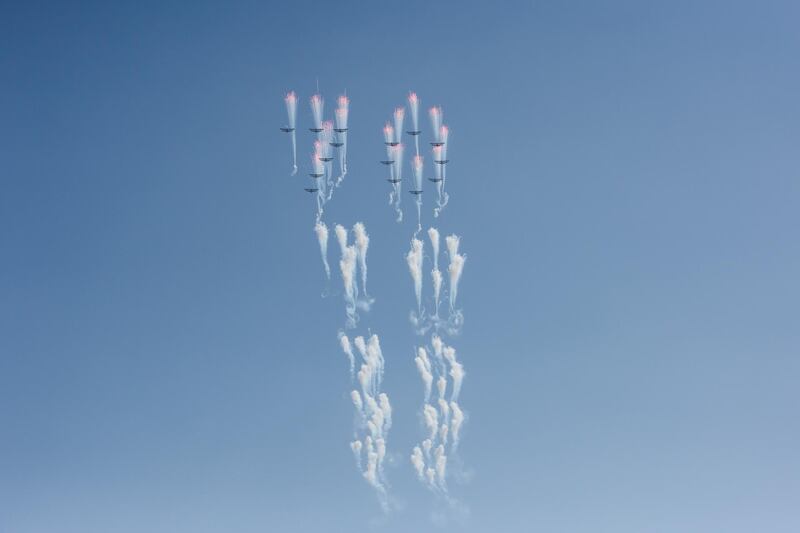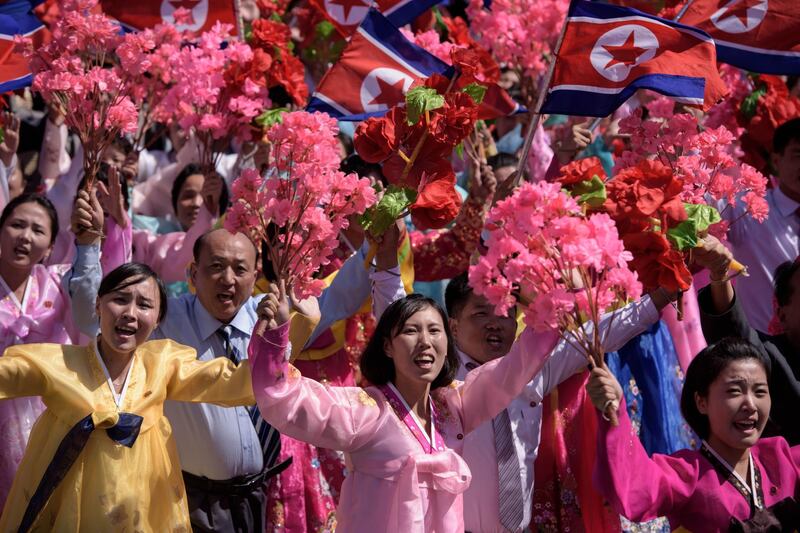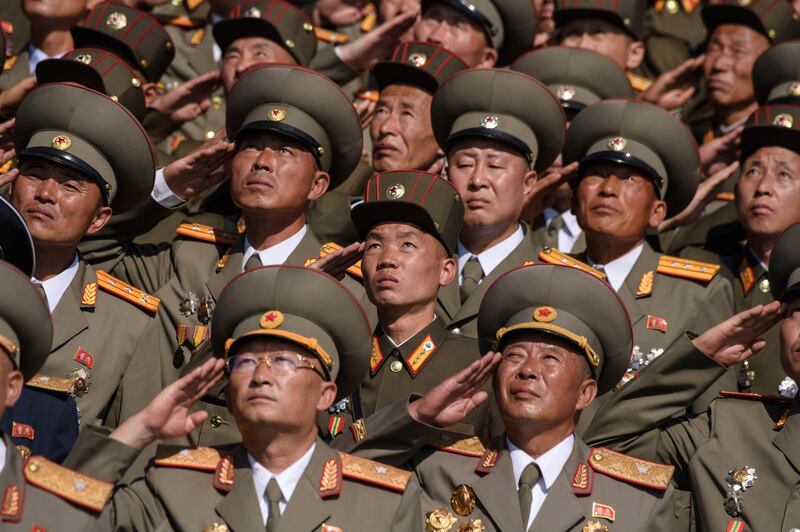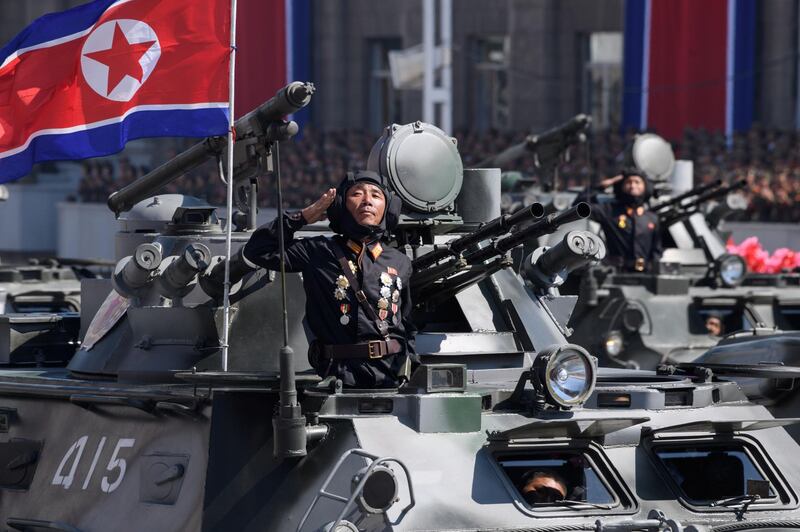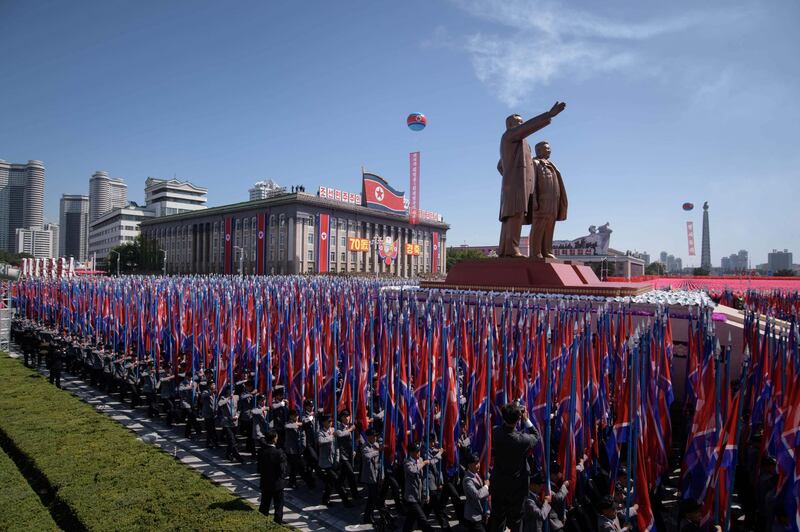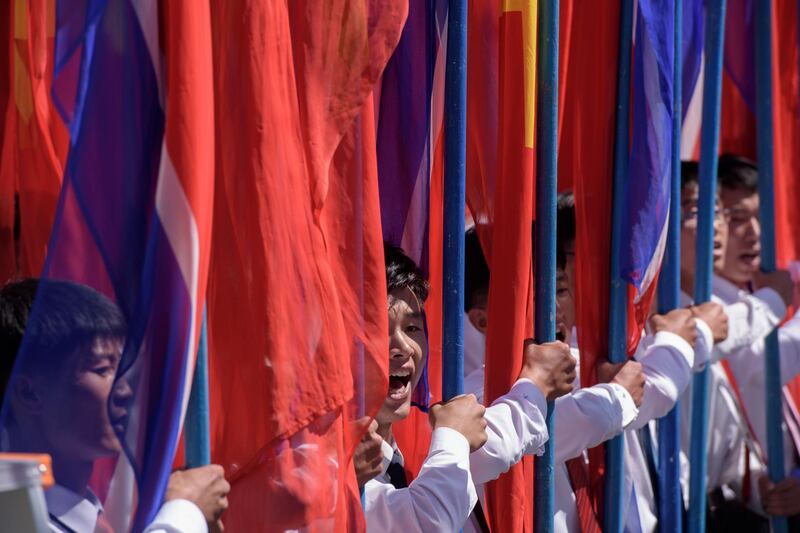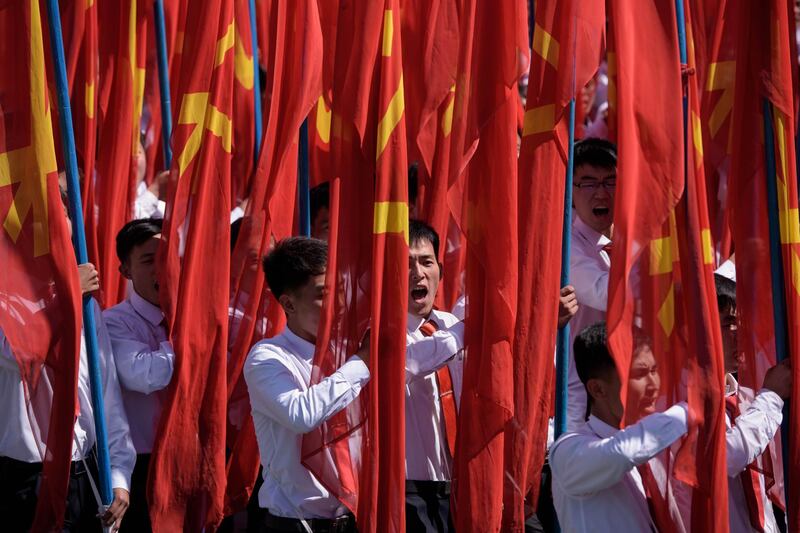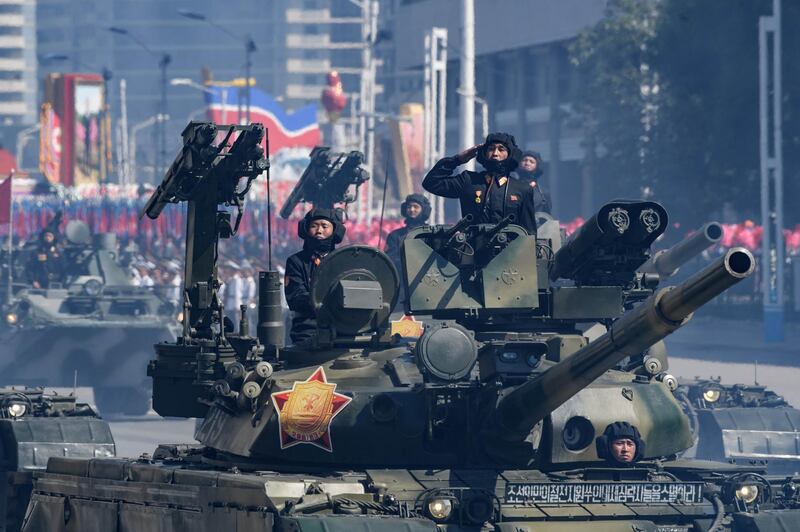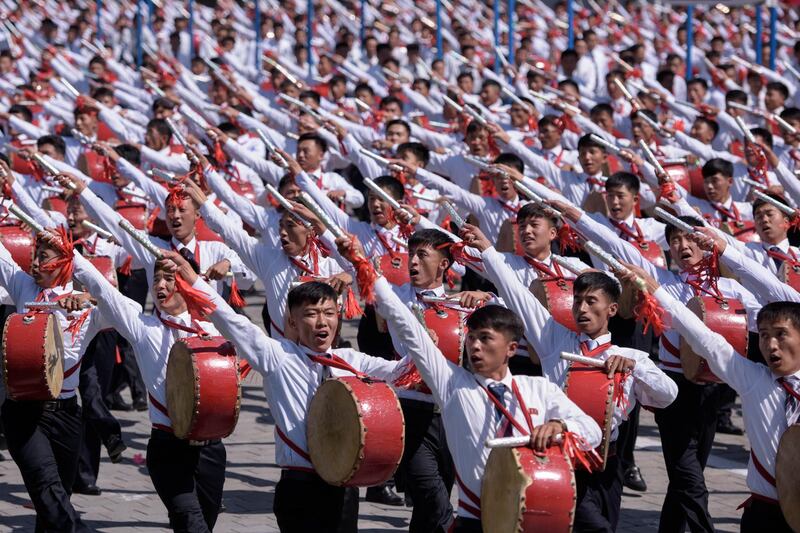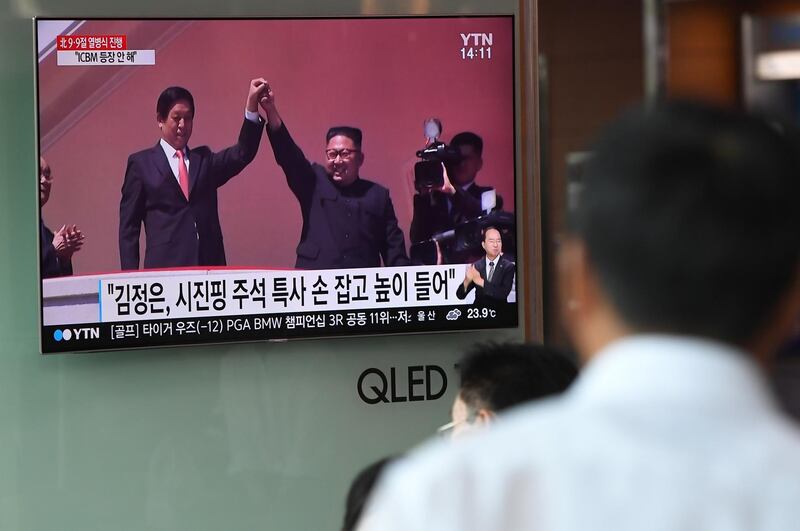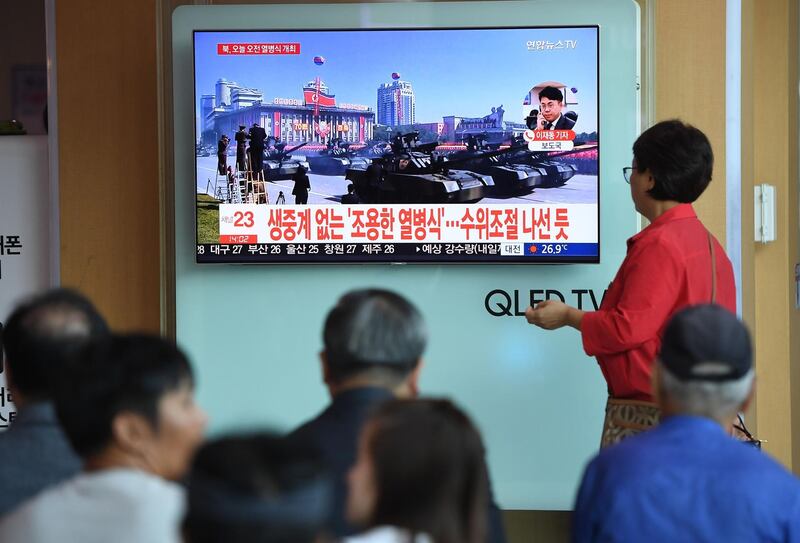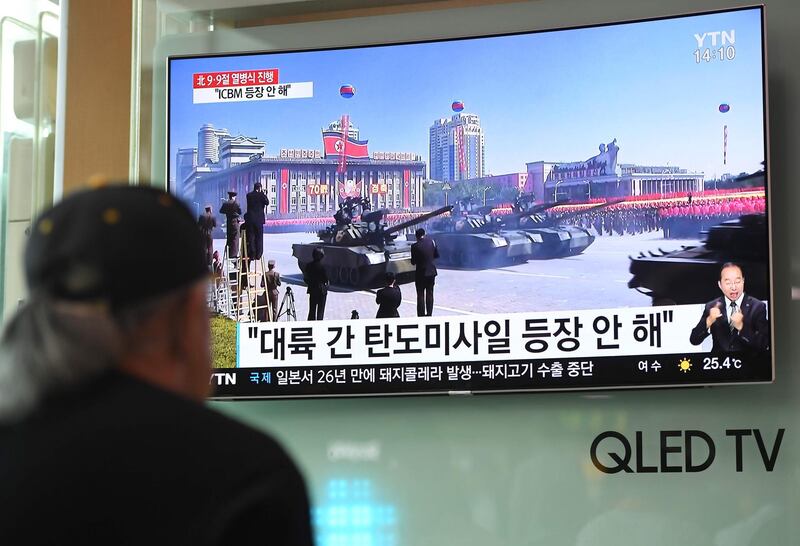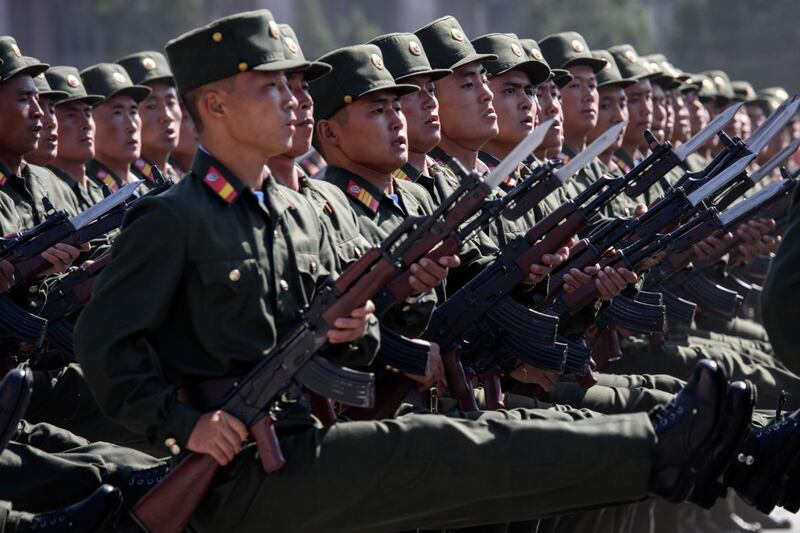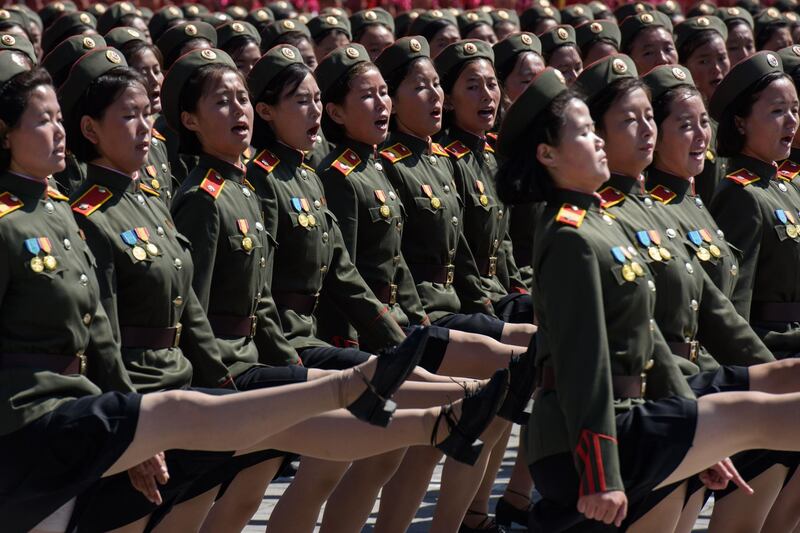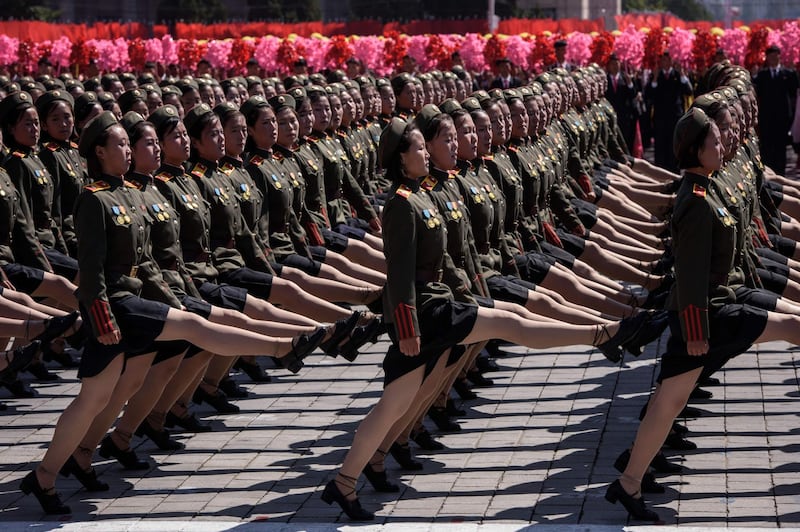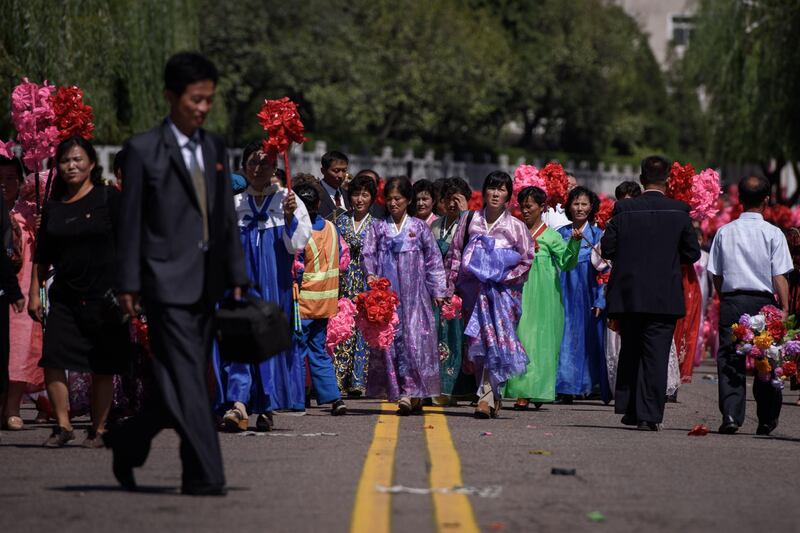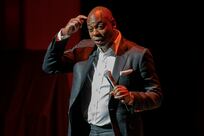North Korea rolled out some of its latest tanks and marched its best-trained goose-stepping units through Kim Il-sung Square in Pyongyang in a major military parade on Sunday to mark its 70th anniversary, but held back its most advanced missiles and devoted nearly half of the event to civilian efforts to build the domestic economy.
The strong emphasis on the economy underscores leader Kim Jong-un's new strategy of pushing economic development to the fore.
Tens of thousands of North Koreans waving brightly coloured plastic bouquets filled the square as the parade began. Pyongyang residents have been training for months for the anniversary and held up the bouquets to spell out words and slogans visible from the VIP viewing area.
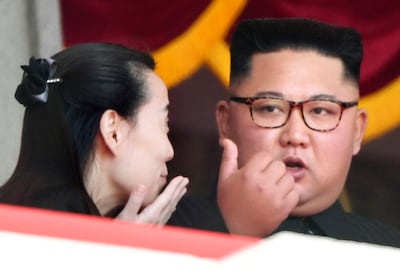
Mr Kim attended the morning parade, but did not address the crowd, which included the head of the Chinese parliament and high-level delegations from countries that have friendly ties with the North.
At the end of the two-hour event, he strolled to the edge of the balcony with the Chinese special envoy Li Zhanshu, who is also the third-ranking member in China's ruling Communist Party. The two held up their joined hands to symbolise the countries' traditionally close ties, although the absence of Chinese President Xi Jinping could indicate Beijing still has some reservations about Mr Kim's initiatives.
Senior statesman Kim Yong-nam, head of North Korea's parliament, set the relatively softer tone for the event with an opening speech that emphasised the economic goals of the regime, not its nuclear might. He called on the military to be ready to work to help build the economy.
_________
Read more:
[ North Korea's Kim Jong-un says he wants to denuclearise in Donald Trump's first term ]
Trump says China making things 'much more difficult' with North Korea
US and North Korean top diplomats exchange pleasantries, barbs
UN experts report wide-ranging violations by North Korea
_________
After a truncated parade featuring tanks and some of its biggest artillery, fewer than the usual number of missiles and lots of goose-stepping units from all branches of the military, the focus switched to civilian groups, from nurses to students to construction workers, many with colourful floats beside them.
The combining of military and civilian sections is a familiar format for North Korean parades.
The past two big anniversaries of North Korea's founding, in 2008 and 2013, did not feature the Korean People's Army, only the civil-defence units, which are officially called Worker-Peasant Red Guards.
Although North Korea stages military parades almost every year, and held one just before the Winter Olympics began in South Korea in February this year, Sunday's parade came at a particularly sensitive time.
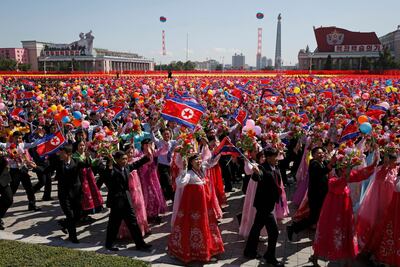
Mr Kim's effort to ease tensions with US President Donald Trump has stalled since their June summit in Singapore. Both sides are now insisting on a different starting point. Washington wants President Kim to commit to denuclearisation first, but Pyongyang wants its security guaranteed and a peace agreement formally ending the Korean War.
With tensions once again on the rise, a parade featuring the missiles that so unnerved Mr Trump last year, and led to a dangerous volley of insults from both leaders, could have been seen as a deliberate provocation. The North also refrained from immediately televising the event, although North Korean media were out in force to film it, using booms and drones with cameras.
Capital residents unable to attend at the square lined the streets around town to cheer and applaud convoys carrying the troops after they complete the parade duties.
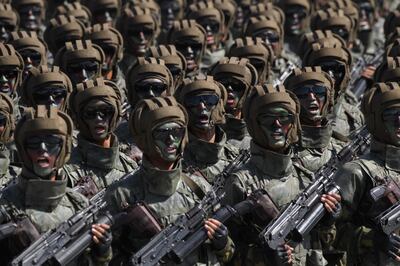
Soon after the Sunday celebrations end, Mr Kim will once again meet South Korean President Moon Jae-in in the capital to discuss ways to break the impasse over his nuclear weapons.
The policy of putting economic development first has been Mr Kim's top priority this year. He claims to have perfected his nuclear arsenal enough to deter US aggression and can now devote his resources to raising the nation's standard of living.
This year's celebrations also mark the revival of North Korea's mass games after a five-year hiatus.
The mass games involve tens of thousands of people holding up placards or dancing in precise unison and are intended to be a display of national unity. This year's spectacle — tickets cost from about US$100 (Dh367) and go up to more than $800 per seat — also has a strong economic theme.
An unofficial translation of its name this year is "Our Shining Nation".
